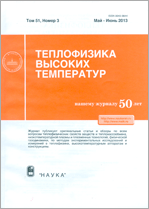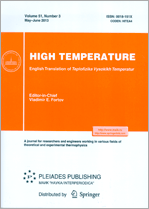|
This article is cited in 19 scientific papers (total in 19 papers)
Review
Obtaining nanosized materials in plasma discharge and ultrasonic cavitation
N. A. Bulychevab
a P. N. Lebedev Physical Institute of the Russian Academy of Sciences, Moscow
b Moscow Aviation Institute (National Research University)
Abstract:
Physical methods for obtaining nanosized materials and structures in liquid-phase media, characterized by the action of high energies on a substance, are considered: the synthesis of nanomaterials in plasma and under the action of intense ultrasonic vibrations above the cavitation threshold. It is shown that liquidphase plasma-chemical reactions are in a certain sense similar to sonochemical reactions, since both of these types of processes represent a local concentration of high energies in liquid reaction media. The data of the experimental and theoretical works of domestic and foreign researchers on the plasma-chemical and sonochemical synthesis of nanomaterials of various compositions and structures are analyzed, and it is shown that the application of high-energy sources to chemical processes can significantly change their course and make it possible to synthesize nanosized materials that cannot be obtained under other conditions or has a low speed and a low yield of the final product. The prospectives of continuing such work in the future for the development of methods for the synthesis and study of the properties of nanomaterials are shown. It is shown that the combined effect of high-intensity ultrasonic oscillations above the cavitation threshold and pulsed or stationary electric fields on a liquid medium leads to the appearance of a special form of electric discharge in a cavitating liquid medium, which is still an understudied physical phenomenon with original electrophysical and optical characteristics, and the study as a method of targeted synthesis of nanosized materials is a new scientific challenge.
Received: 20.02.2021
Revised: 20.02.2021
Accepted: 19.05.2021
Citation:
N. A. Bulychev, “Obtaining nanosized materials in plasma discharge and ultrasonic cavitation”, TVT, 59:4 (2021), 600–633; High Temperature, 60:1, Suppl. 1 (2022), S98–S126
Linking options:
https://www.mathnet.ru/eng/tvt11541 https://www.mathnet.ru/eng/tvt/v59/i4/p600
|


| Statistics & downloads: |
| Abstract page: | 296 | | Full-text PDF : | 473 |
|





 Contact us:
Contact us: Terms of Use
Terms of Use
 Registration to the website
Registration to the website Logotypes
Logotypes








 Citation in format
Citation in format 
